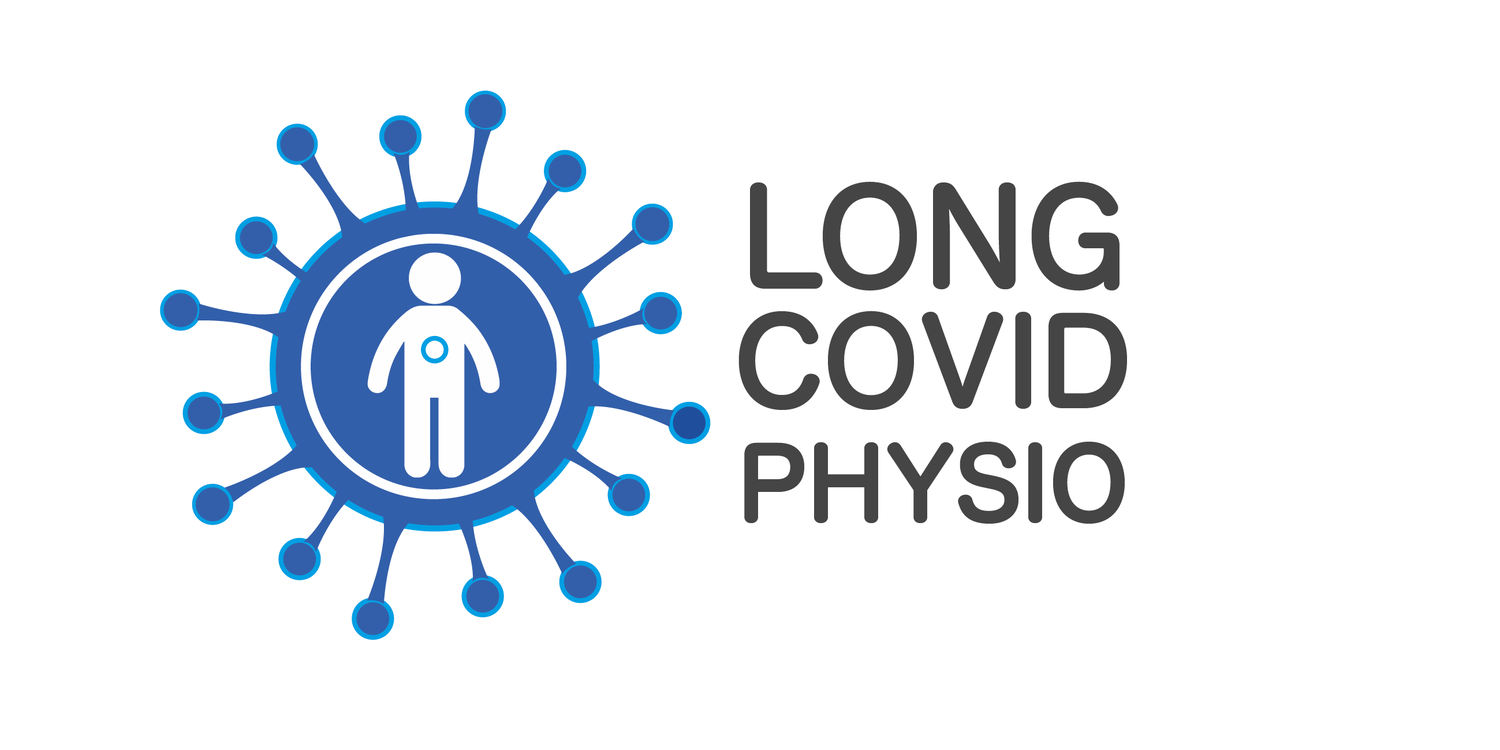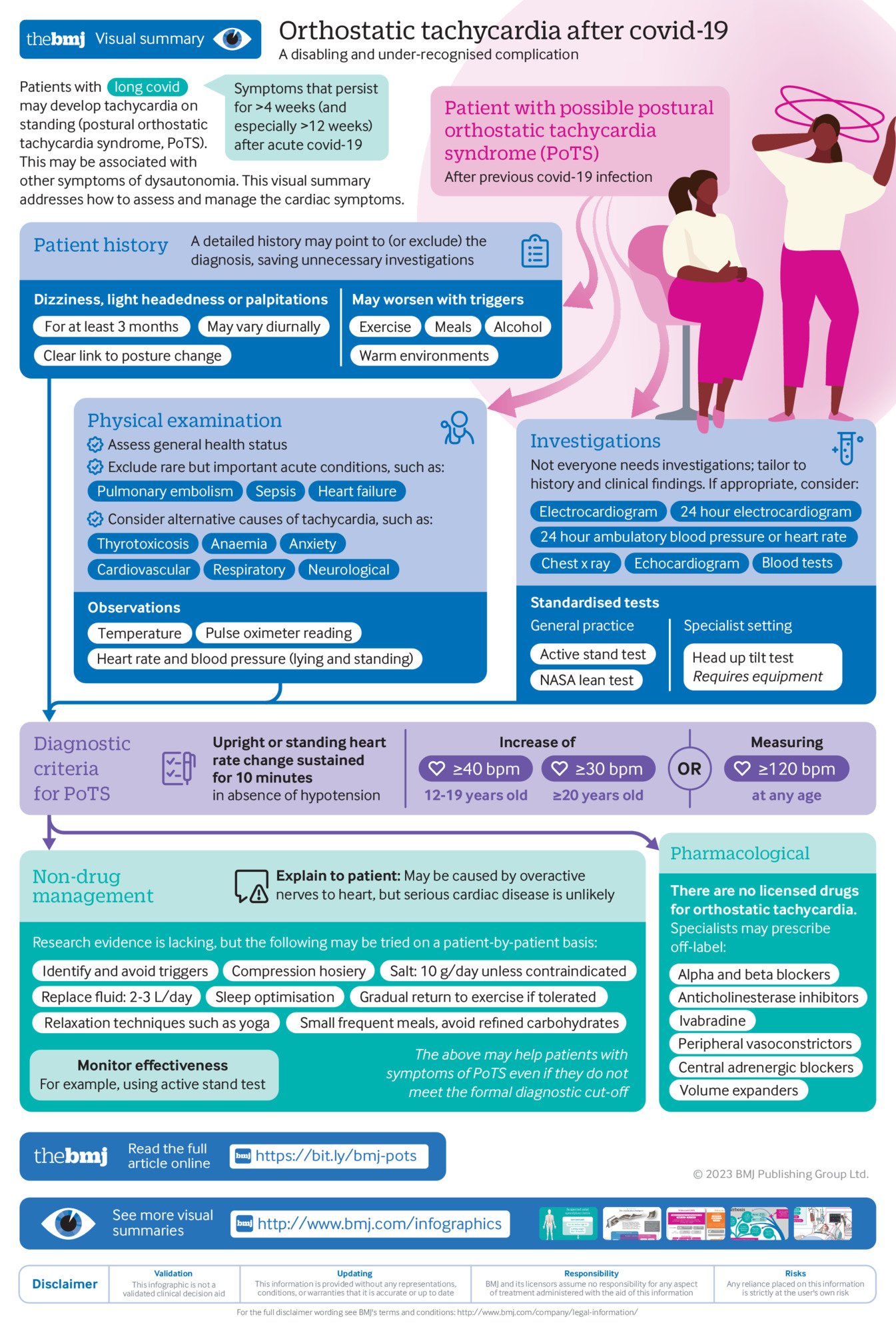Orthostatic Intolerance, Dysautonomia and POTS
This episode is from the Long COVID Video Series. Please visit the website to access audio and written versions and translations.
Orthostatic intolerance, is the term used to describe the symptoms that occur after sitting up or standing. Symptoms can include feeling light headed, dizzy, faint, sick, or an uncomfortably rapid increase in heartbeat, in upright positions. You might notice symptoms when standing still for a few minutes, bending down, sitting in a chair with your feet on the floor, or that you work better on a laptop or tablet while sitting or lying down. Symptoms can also be made worse during a hot shower or bath, after a big meal, or around menstruation.
The autonomic nervous system is part of our body’s nervous system. It is responsible for controlling automatic or involuntary body functions such as heart rate, blood pressure, breathing, digestion, sexual function, dilation and constriction of the pupils of the eye, kidney function, and body temperature control. Dysautonomia is an umbrella term, that refers to a problem with the autonomic nervous system. When the autonomic nervous system does not function properly, people may have trouble with the regulation of heart rate, blood pressure, body temperature, and perspiration.
Other symptoms can include fatigue, lightheadedness, dizziness, feeling faint (pre-syncope) or passing out (syncope), problems with balance, migraines, erectile dysfunction, weakness, shortness of breath, excessive sweating, exercise intolerance, and cognitive impairment. Dysautonomia can occur as a primary problem, where only the autonomic nervous system is affected. But it can also be secondary to other disease processes such as Diabetes, Parkinson’s Disease, Lupus, Guillain-Barre syndrome, Ehlers-Danlos syndrome, Charcot-Marie-Tooth disease, Rheumatoid arthritis, Muscular sclerosis, Lyme disease and others. Dysautonomia can often be misdiagnosed, or even remain undiagnosed.
Postural Orthostatic Tachycardia Syndrome (POTS) is a form of dysautonomia, characterised by an abnormal increase in heart rate after sitting or standing, causing dizziness or fainting. It is a common form of dysautonomia and can be triggered by viral or bacterial infections. Early reports suggested a possible association between COVID-19 and experiencing POTS symptoms. Case reports are presented in Clinical Medicine Journal, providing rationale, physiology and management strategies of autonomic dysfunction in Long COVID. Further case studies from Sweden are presented. The American Autonomic Society have published a statement on Long COVID postural tachycardia syndrome, calling for significant healthcare resources and research investment due to the scope of this problem. The British Journal of General Practice published an update on POTS and Long COVID, including assessment and management. Emerging evidence suggests that parasympathetic overtone and increased heart rate variability may explain the unresolved orthostatic symptoms in people with Long COVID. Heart rate variability has been proposed as a marker of cardiovascular dysautonomia in Long COVID.
POTS UK provides a range of useful resources such as what is POTS, leaflets about POTS including “10 things you need to know about POTS”, “Disability Help”, “GP Guide”, “Information for Employers” and more. POTS UK also provides information on managing POTS and how to find a specialist near you. They is also informaiton for healthcare professionals with a GP Guide, journal articles, and guidelines. A newly released POTS UK booklet contains lots of reliable information in one location.
The Bateman Horne Centre provide free educational resources on Orthostatic Intolerance.
Long COVID Alliance have hosted a webinar with Dysautonomia International president and co-founder Lauren Stiles, on “Long COVID, dysautonomia and POTS”. Dysautonomia International also provides a video on “Understanding Functional Limitations and the Role of Occupational Therapy in POTS”.
The BMJ published a practice pointer on “Orthostatic Tachycardia after COVID-19” including infographic with tips on patient history, physical examination, investigations, diagnostic criteria, pharmacological and non-drug management.
If you are worried you may have signs or symptoms of orthostatic intolerance, dysautonomia or POTS, you should first seek medical attention.
Lifestyle adaptations have been proposed to help manage symptoms. It would be advisable to discuss these with your healthcare provider, to identify if these lifestyle adaptations are safe for you. People living with Long COVID can have problems with the heart, blood clotting and post-exertional symptom exacerbation, that may guide your health care provider to decide if it is safe to drink more fluids, have a high salt diet, or exercise. Safe rehabilitation considerations are discussed in the World Physiotherapy Briefing Paper specific to orthostatic intolerances. Dysautonomia International have useful information on their website, including educational videos and a video archive. The Heart Rhythm Alliance (STARS) has patient information on POTS including videos describing POTS, diagnosis and management, clinics, how to live with POTS, research, causes, who is at risk, and available help.
World Physiotherapy Briefing Paper on safe rehabilitation approaches for people living with Long COVID
Date Last Revised: 25th February 2023


